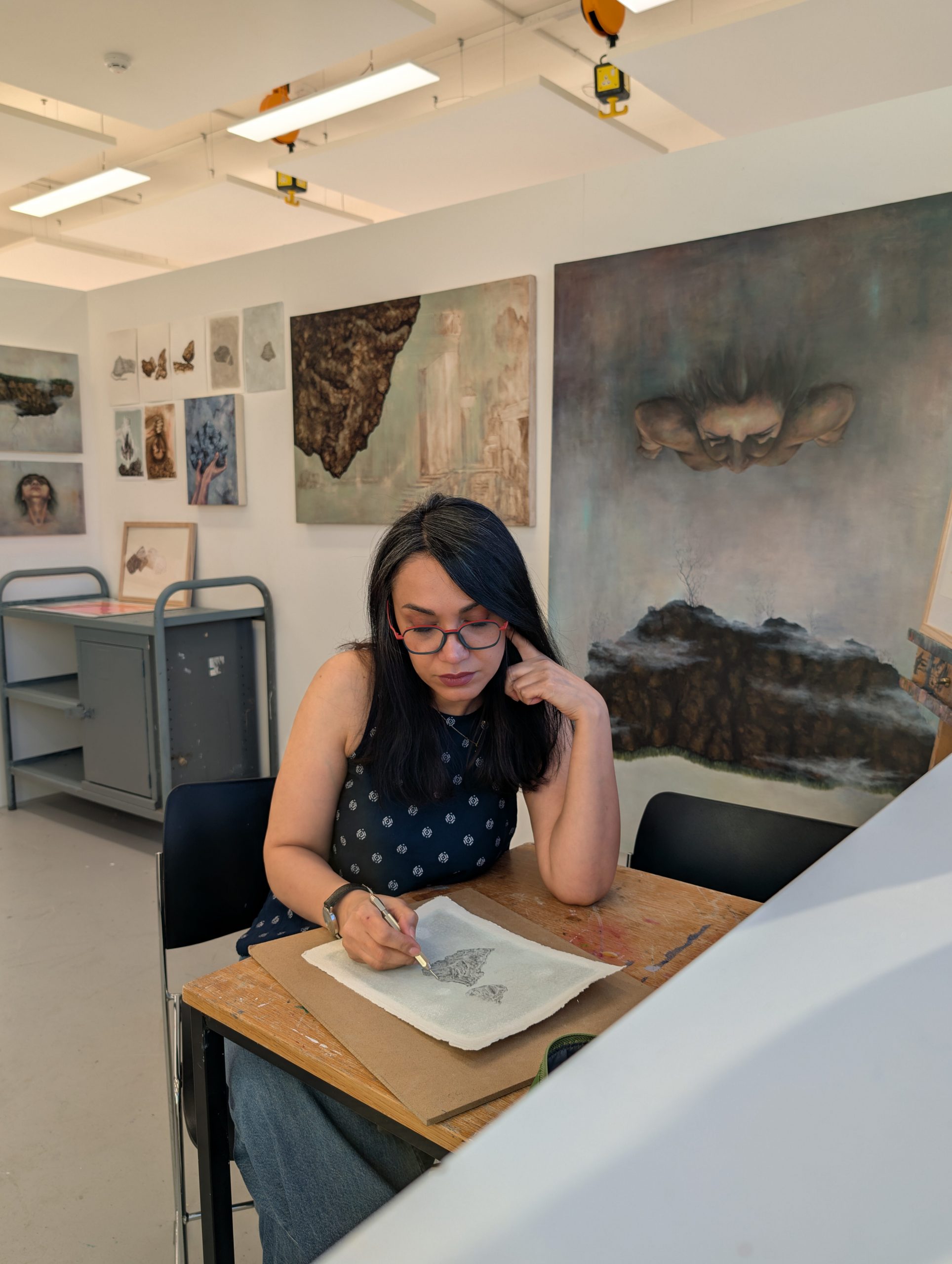Artist Bio:
Masoume (Masi) Naidj (b.1985) is a painter based in Manchester whose artistic path moves between Tehran and the UK. She holds a BA in Painting from Soore University, an MA in Art Research from the University of Science and Culture, and an MA in Fine Art from Manchester Metropolitan University.
Her professional background includes roles as an Artistic and Educational Advisor and Curatorial Assistant at Art Center Gallery in Tehran (2012), and as well as teaching at Rasam University (2020). Masi’s practice is grounded in questions of memory, fragility, and the shifting tensions between presence and absence.

Artist Statement:
Across my work, stones return not as objects to describe but as fragments of a home I cannot fully locate.
For me, home is not a fixed place. It is a shifting condition, fragile and unstable, held between presence and absence, memory and forgetting.
It is something I long for and resist at the same time, as if it once existed but never came fully into form.
The stones in my paintings act as silent witnesses.
They do not narrate, yet they carry traces of history, culture, and loss.
Their stillness suggests permanence, but their silence reveals fragility.
Working with them allows me to stay close to what cannot be explained, to that suspended space between holding on and letting go.
Materials are central to this language.
Walnut ink is unstable; its marks blur, dissolve, or can be erased like memories that fade and return.
Silverpoint works in the opposite way. Its delicate lines resist erasure but quietly tarnish over time, as if the drawing continues to change long after it is made.
Each material embodies the same tensions that shape my practice, between permanence and impermanence, presence and disappearance.
My work dwells in these intervals, between weight and lightness, silence and speech, clarity and erasure.
I do not try to resolve these tensions into narrative.
Instead, I create spaces where such opposites can be felt directly, alive in their fragility.
Each painting becomes less a statement than a threshold, an opening where the image hovers at the edge of appearance, as if the stones themselves were speaking in silence.